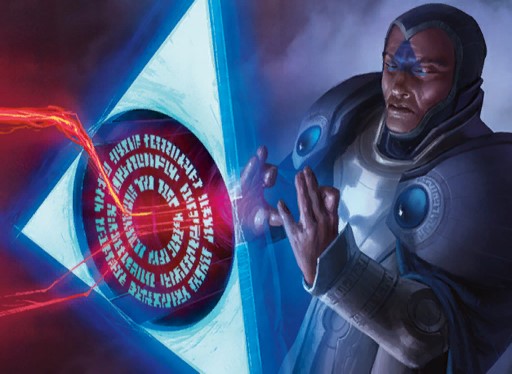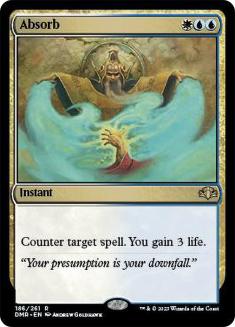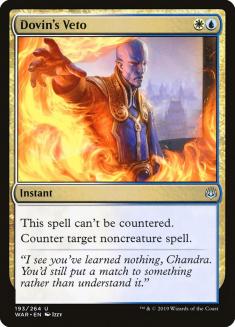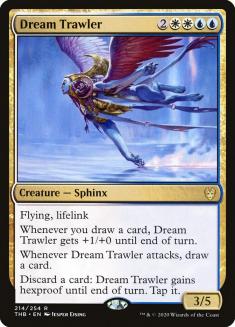As you may or may not know, before World Championship XXVI I spent about about three weeks in Prague, testing for both the Regional Players Tour and the World Championship with the team called the Czech Magic House. The Czech Magic House consists of Stan Cifka, Ondrej Strasky, Ivan Floch, and Jan Kotrla (who all live together, hence the name), and they’ve developed a reputation for being excellent deckbuilders (they were the ones who came up with the Kethis Combo deck in Core Set 2020 Standard, for example). Since I stayed there and worked with them, I got to pay close attention to their process and what they do differently from other players, and I learned several lessons that I will share with you in this article.
1. Build Your Sideboarded Decks
Everyone knows that sideboarding is an important part of Magic – after all, you play at least as many games with sideboard as you do without and often many more. In spite of that, building a sideboard is usually relegated to the last couple of days of testing or even the night before.
In theory, it makes some sense that the sideboard is the last thing you work on – you need a maindeck first and foremost and the sideboard is often easy to theorize if you understand how the matches play out. This is what I usually do when I test; I spend most of my time coming up with the perfect 60 cards and then I will mostly use theory to construct the remaining fifteen in the last possible moment.
The way the Czech House builds sideboards is a bit different. They figure out which configuration they ideally want against each archetype and then try to come up with a full 75 that reflects that. Then, once the optimal 75 is achieved, they figure out which 60 should be in the maindeck and which fifteen should be in the sideboard. I’ve seen other people talk about this – Gerry Thompson was a big proponent of it, I believe – but I had never truly seen it in practice.
To illustrate, I’m going to use the Azorius Control deck we played at World Championship XXVI, though this concept can be applied to any deck. This is what our deck screen looked like a couple of days before deck registration:

If you were to click on, say, “Mono-Red Play,” you’d find this:

The same would be true for each specific matchup configuration.
The process to get here is not necessarily complex – you just build specific post-sideboard configurations against the most popular decks and then you go around tweaking them so that they match each other in numbers. For example, you might notice that, against several of the popular decks, you want to have four Dovin’s Veto in your ideal configuration – therefore, those are likely going to be there in some combination of maindeck + sideboard.
You might also notice that, even though you’d really like four Aether Gust, four Devout Decree, and four Cerulean Drake versus Mono-Red Aggro, realistically you cannot get that, so you’ll start at a more reasonable number and then go back and forth. In our case, we thought Cerulean Drake was the best card against Mono-Red Aggro and Devout Decree the second-best, but we noticed our configuration versus both Temur Reclamation and Ramp decks had four Aether Gusts in it, so in the end we only had room for two Drakes and four Gusts.
This is way more time-consuming than the usual “build a maindeck and then build a sideboard” process, but it has a couple of big advantages.
The first is that your post-sideboard configurations are much more cohesive. A lot of the time, we bring in good cards and take out bad cards but never look at the complete picture of what our deck looks like, and we don’t treat it as an actual deck. Because of that, we miss things like “I don’t have enough two-drops” or “I don’t have enough enchantments for Thirst for Meaning” or “I have too many white cards and too few white sources” in our sideboarded configurations.
Sometimes, when we lay out our actual sideboarded deck, we’ll notice that we actually have too much removal versus the aggro decks, and not enough late-game. Honestly, just the process of looking at your sideboarded deck and treating it as you would treat a maindeck is very likely to improve your sideboard strategy and it’s something that up to that point I had never done.
The second benefit is that it helps avoid “oversideboarding.” A lot of the time, we have good cards to bring in, but we end up taking out cards that aren’t actually that bad in the matchup, so we’re diminishing the value of our sideboard slots. For example, taking out Mystical Dispute versus Mono-Red is highly valuable, so whichever card you’re replacing Mystical Dispute with is very important to have. Taking out one Thirst for Meaning on the draw is something that you’d like to do, but it’s not a disaster if you can’t do that and if the Thirst for Meaning has to remain in your deck.
Therefore, if we isolate this scenario to exemplify the point, the first two Devout Decrees against Mono-Red will have full value (you’re taking out a very bad card for them), but the third Devout Decree will only have half value since the card you’re taking out isn’t actually that bad. Looking at the full decklists helps you realize when this is happening.
The third benefit is that it actually saves time later on by letting you skip the entire “but what do I take out in this matchup” process that happens every single time – you never need to figure that out during the tournament or the day before because it was all built into the method you used to construct your sideboard.
2. A Post-Sideboard Game Should Be Treated as a Different matchup
I’ve already talked about the “sideboard against their sideboarded deck” concept, but I believe the Czech House takes it to an entirely different level. Rather than “adapt slightly to their post-sideboard configuration,” they treated each post-sideboard game as an entirely different matchup, which led to extremely unintuitive sideboard strategies. In practical terms, this means recognizing that a card that is excellent Game 1 might not be as good for Games 2 and 3, because the game fundamentally changes, so you should throw away your preconceived notions of what cards are generally good in a certain matchup and think through it all over again for post-sideboard games.
This was the case with our plan against Jeskai Fires, for example. In Game 1, our deck was well-constructed against Jeskai Fires because we had a lot of counterspells and they struggled to resolve anything meaningful. Most people took that to mean that counterspells were great against Jeskai Fires, and therefore we should have as many as possible for Games 2 and 3.
Instead, what we did was the opposite – we removed some number of counterspells from our deck instead of adding more, even though they were the best cards in Game 1. This was mind boggling for most people, but I think it was correct, and the way we could figure out to do that was by just treating a post-sideboard game as a different matchup. Yes, counterspells are good against Jeskai Fires, but we’re no longer playing against Jeskai Fires, we’re playing against “Sideboarded Jeskai Fires,” and counterspells aren’t very good versus that deck because they have Teferis, Mystical Disputes, and a lot more pressure in the form of Legion Warboss, Tithe Taker, or Robber of the Rich.
The same train of thought was used in the Temur Reclamation matchup. Narset, Parter of Veils is one of your best cards in Game 1, and, even though it can be quite good in Game 2 against some versions of the deck, it’s actually a liability against the people with several Nightpack Ambushers and Shifting Ceratops. Against these people, Archon of Sun’s Grace is a better card, which is certainly unintuitive given the card is unplayable against them in Game 1.
3. Come Up with Different Configurations on the Play or Draw
This is also something that I’m aware of and have even written about, but it’s another thing that I believe they took much farther than other people usually do (including me). When I build decks and sideboards, I can usually adjust a couple of cards as better on the play or on the draw in my mind – for example, I know that a card like Nissa, Who Shakes the World is much better on the play than on the draw, so sometimes I will take the card out on the draw and keep it in my deck on the play. What the Czech House does is apply this concept to the entire deck and fundamentally change how the deck operates between play or draw.
Again, you can use our matchup against Jeskai Fires as an example. On the play, we thought we could play a normal game and react to their spells while they played them, so Absorb, for example, was a reasonable card. On the draw, we figured out that we would often have to tap out to answer their threats, which meant the counterspells became much worse (and also that they were more likely to resolve Teferi, Time Raveler), so we adopted a more proactive plan when we were on the draw compared to when we were on the play, which is usually an inversion of how things go. It wasn’t just “this card is slightly worse on the draw, so let’s take out it;” it was a complete restructuring of how we configured our deck and how we played the matchup, specifically to reflect the fact that we were on the draw.
4. Spend Time Working on Your Manabase
The amount of time Magic players spend working on their manabase is entirely disproportional to how important it is. I myself am guilty of this – I will spend three hours agonizing over whether my 60th slot should be an Absorb or a Sinister Sabotage, but only five minutes looking over my entire 26-land manabase. This is profoundly stupid.
When it comes to manabases, there’s a real inertia in the Magic community – we see something that worked for someone else and we just copy it. We’re very happy to change a couple of cards from a list, but most of the time we don’t even look at the manabase. Instead, what the Czech House does, and what we should do, is actually spend time to figure out our manabases. This is not only because changes we make to our deck affect the manabase but also because there’s no guarantee the manabase we copied was right to begin with.
Manabases are hard to build because they are a somewhat, but not entirely, mathematical problem. It’s easy to know how many lands you need to hit a certain color by a certain turn (you can, for example, use a hypergeometric calculator) but it’s up to you to decide which amount is good enough. I can calculate that, if I play thirteen green sources, my chances of having one in my opening hand are 83%. But is 83% good enough? Should I try to get 90%? Is it potentially too much, taking away from my other colors?
Creatures (13)
Planeswalkers (6)
Lands (28)
Spells (13)

This is going to depend on which deck you’re playing. Our process mostly consisted of first figuring out what the most important things were and then trying to make the manabase match it. For example, with Five-Color Niv-Mizzet in Pioneer, we made a list of priorities (first, it was paramount that you never have three copies of the same multicolored land; then, we needed to be able to cast the gold cards, and so on) and then we tweaked the manabase to get to that point. In Theros Beyond Death Standard, the priority was usually to just have the right colors in your opening hand. For a color that you would never keep a hand without, we thought the optimal number to be generally over 90% – for example, our Azorius Control deck had a 93% chance to have blue mana in its opening hand.
You should also spend some time figuring out the right configuration of your manabase after you conclude how many sources of which color you want. Should you play, for example, Temple of Enlightenment and Watery Grave or Temple of Deceit and Hallowed Fountain? How about Temple of Enlightenment and Temple of Deceit? All of those give you the same number of colored sources, yet are fundamentally different manabases.
There’s obviously no set rule for what is important here, but some of the things you need to take into account:
- How many lands that enter the battlefield tapped can you afford? Do you need to cast your two-drops on Turn 2 or can you afford to cast them on Turn 3? What does the game look like when your first two or three lands enter the battlefield tapped? What does it look like when land number six enters the battlefield tapped?
- Which color(s) of mana do you need early? The difference between casting a Turn 1 Llanowar Elves or a Turn 2 Llanowar Elves is much bigger than the difference between casting a Turn 1 or a Turn 2 Fatal Push, for example, so even though both cards cost one mana the amount of untapped sources you need for each is different.
- Which colors do you need together? If you have Watery Grave and Plains, that’s the same colored sources as Hallowed Fountain and Swamp, but only the second manabase can cast Thought Erasure on Turn 2, so you should be careful to spread out the colors in your gold cards.
- How does your sideboard change your manabase? When we played Five-Color Niz-Mizzet, for example, we knew we didn’t need many untapped white sources in Game 1, but we also knew that we were sideboarding in cards like Voice of Resurgence, which we really wanted to be able to play early, and that impacted our manabase as well.
Another important thing with manabases is that the number of lands isn’t always correct. It used to be that a lot of decks were simply not playing enough lands – I believe it was Paul Rietzl who used to say that whenever he didn’t have time to test for a tournament he would just copy a random decklist from Magic Online except he would add an extra land. Nowadays, the average number of lands in decks is really high, so you’re less likely to run into this, but always keep in mind that the number of lands might not be correct when you copy a decklist, so do your own calculations.
Basically, it’s very hard to give specific actionable advice that applies to all manabases in general, but the point is that you should spend time doing it – it is an important part of your deck and it’s usually neglected by everybody. Don’t just “copy a manabase that works.” Do some analysis on it yourself to see if there’s anything that needs to be changed.
5. Don’t Automatically Bow to Conventional Wisdom
The hive mind is very often right, but it’s not always right, and it’s important to know that it can be wrong, especially very early on in a format. For example, when we were testing for World Championship XXVI, Dream Trawler was one of the most talked-about cards – it was pegged as the main reason Azorius Control had its return to dominance. Corey Baumeister list from SCG Richmond the week before had four copies and everyone I talked to seemed to accept that as the standard for the deck.
When Stan suggested a decklist with zero Dream Trawlers, I thought he was crazy – surely Dream Trawler was the reason to play Azorius Control, and if playing zero copies of it was correct, then why would everyone else be playing four? Despite that, he tried it anyway, and it turned out the deck was better without four Dream Trawlers (even though we ended up playing one).
The same happened with Five-Color Niv-Mizzet in Pioneer – conventional wisdom said we wanted Paradise Druid, since that was what everyone played, but upon exploring the deck more they found that Gilded Goose just made more sense, even though it was a card that literally no one else played.
In the end, there are many different schools of deckbuilding, and people with different amounts of experience and resources, or even with different personalities and playstyles, are going to do different things. I don’t believe every process the Czech Magic House has for deckbuilding is necessarily perfect, but I believe these five things I mentioned are things that most players would do well to incorporate into their testing regimen, as I think they are a big part of the reason this team has had so much success lately.






